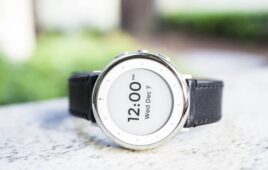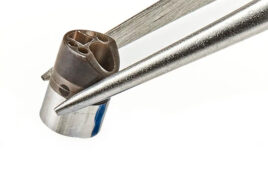When designing wearables for the human body, Bryce Rutter, founder and CEO of Metaphase Design Group, started his session at MD&M West on how we are three-dimensional beings, which makes designing wearables a complicated process.
“Wearables need to adhere to flexible surfaces if you’re trying to maintain surface contact, then we sweat and we make it wet which confounds the design quite a bit,” says Rutter. “Then we have things like reach, dexterity, age…and clothing gets in the way. It would be really cool if everyone were naked, but that’s not going to happen. You need to consider what the interaction is, where the site is, and how the clothing rides up.”
Additionally, people come in all different sizes and shapes.
“Now think of that challenge. You have to design a wearable where one size fits all,” says Rutter. “You’re not going to do a sizing program because that doesn’t make sense from a business standpoint.”
Taking into consideration even the most miniscule details is pertinent when designing wearables. Different skin cultures, when comparing a 16 year old to a 60 year old, is something some might overlook, but it’s another design factor to take into account.
Today, Rutter says many companies utilize surface topology and physiological mapping as a pertinent way to think about fitting their users. This can apply to both fitness trackers and clinical device wearables, and as more individuals integrate wearables into their daily lives, these wearables also come with a lot of “digital noise.”
Digital noise constitutes as the dashboards and information that’s depicted from the wearable’s app in an interactive and colorful way.
“The digital noise that comes with these wearables looks so high tech,” says Rutter. “They’re wonderful pieces of abstract art that you have no idea what they represent. Wearables have this baggage that must be addressed. You have to take into account how to teach a person to use the product; the learning curve is extremely steep.”
Although these devices require a lot of planning when it comes to designing and educating users, no two wearables are the same, but Rutter did categorize some of these devices based on their functions.
Form Fitting
Despite not necessarily containing the electronics most wearables do, form fitting wearables are another aspect of wearables that are applied to the body. They’re often utilized for medical applications, such as the Owlet Smart Sock or the Upright GO posture trainer. These devices help position a body part in a specific way, and although they aren’t monitoring the body by receiving information via a phone, they are still considered a wearable.
Continuous Wearables
Another big category Rutter says is growing is continuous wearables that monitor the body for a specific reason such as monitoring a person’s diabetes.
“What I find fascinating and disappointing about continuous wearables is how they’re like big tumors attached to you,” says Rutter. “One of the challenges for this wearable category is how do we minimize the profile, because I’d rather have a larger footprint and smaller profile.”
Augmented Reality
Augmented reality wearables give users more information because they’re the ones wearing the device, but these devices can be used for an array of different reasons, such as a surgeon performing an operation. Take, for instance, a surgeon wearing a small camera on their head that projects and monitors the heart rate of a patient. A wearable would allow the surgeon to monitor the heart rate while performing surgery without looking away.
“When you’re doing microsurgery, you want all eyes on the task at all times,” says Rutter. “This is an interesting category of wearables. The head size isn’t always the same, it’s a different topological site, and sweat is something to deal with. It’s really quite challenging.”
Epidermal Electronics
Epidermal electronics are like printable sensors that can be applied to our skin. There are many different features to consider, such as being able to stretch the sensor if it’s going to be part of the skin.
“Think about tattooing a sensor on your skin,” says Rutter. “This method addresses a lot of topological challenges on different body sizes.”
As medical device designers navigate the realm of wearables, countless other factors impact the way wearables are created.
In Part 2 of this article, Rutter talks about designing for the hand, an integral part of wearables. He also hones in on the impact wearables are making on both seniors and younger kids.
Bryce Rutter, founder and CEO of Metaphase Design Group, focuses on the depths of designing wearables



